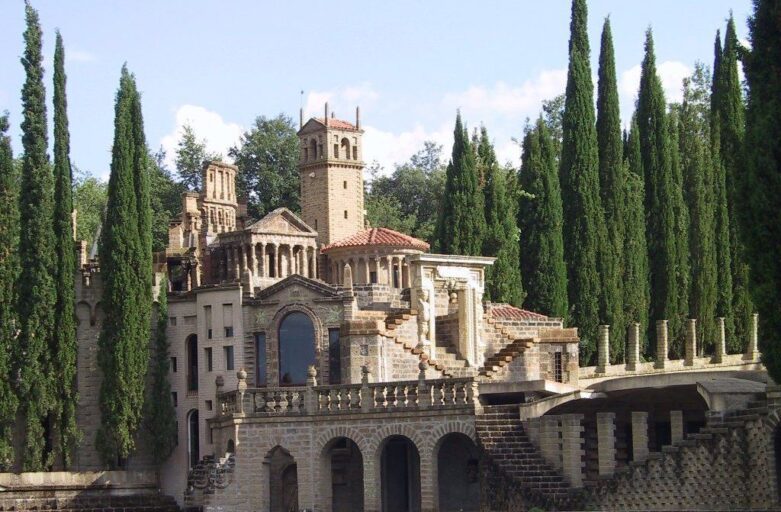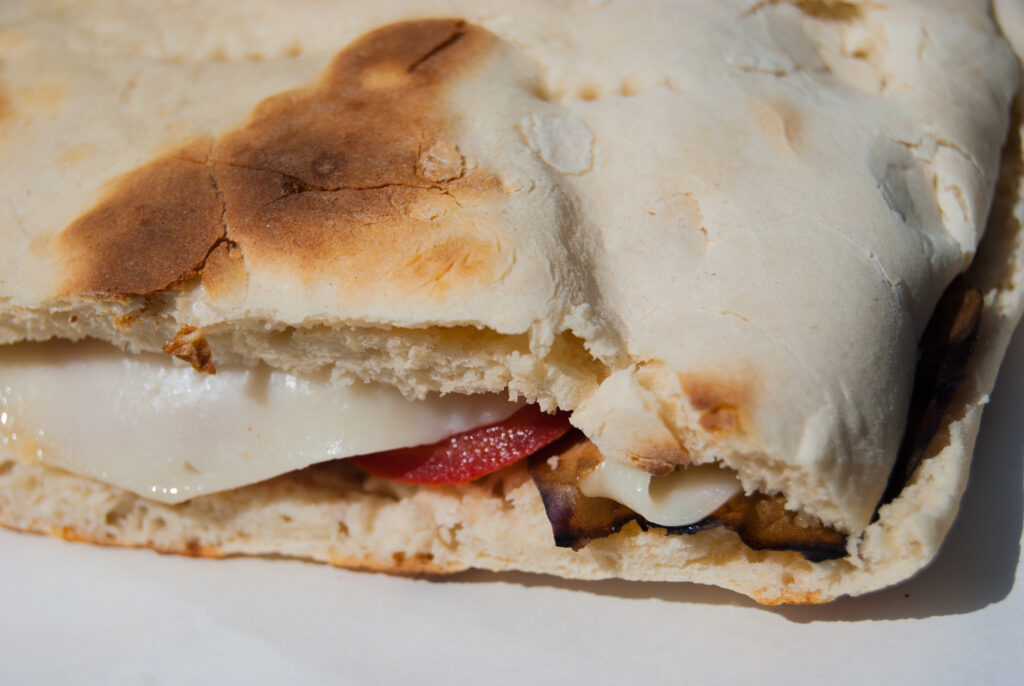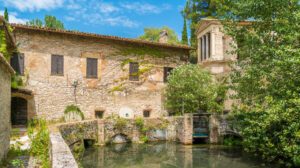La Scarzuola is a rural place located in the site of Montegiove, in the municipality of Montegabbione, a little fortified village in the province of Terni. La Scarzuola is known for the ancient monastery and bizarre buildings designed by the architect Tommaso Buzzi as an interpretation of the concept of an “ideal city”.
The Franciscan monastery
The legend tells that the Franciscan monastery complex was erected on the exact place where Saint Francis had built a hut where he used to go to pray. The hut was made with scarza (or scarsa), a water plant from which La Scarzuola (or Scarsuola) takes its name. In 1282, the Counts of Montegiove had a church built first and then a monastery in correspondence to the hut. At the end of 1700, the Franciscan monastery became the property of the marquises Misciatelli di Orvieto; it was then purchased in 1957 by the architect Tommaso Buzzi.
The “ideal city” by Tommaso Buzzi
Tommaso Buzzi is an architect working for the upper middle class of Lombardy in the first half of the 1900s. With the purchase of this land immersed and isolated among Umbrian hills, Buzzi decided to build next to the existing monastery buildings with exoteric and fantastic features at the same time. In this way, was born a place that allows the visitor to undertake a metaphorical journey in an ideal city. Buzzi thus carried on the project of La Scarzuola from 1958 to 1971, a still unfinished project that passed into the hands of the architect’s nephew after his death in 1981.
After the restoration of the Franciscan monastery, Buzzi designs gardens with fountains and monuments; decorates all with symbols, writings, and quotes. He builds stairs leading to many directions; two stages decorated with the symbols of the Sun and the Moon. A statue of a naked woman (la Grande Madre – the Great Mother) stands out in the garden and is part of the perimeter wall of the Temple of Love (Tempio di Amore).
The symbolism behind the ideal city
La Scarzuola represents the harmonious meeting point between nature and architecture. At the root of its design, there is the allegoric novel Hypnerotomachia Poliphili, written by Francesco Colonna in 1499. The novel is about a journey in search of love, wisdom, and inner transformation. In the same way, the visitor of La Scarzuola is inside a labyrinth with surreal architecture, allowing him to undertake an existential journey. The Tower of Babel, the Musical Scale of Seven Octaves, Jacob’s Ladder, the Arc of Titus, the Pyramids, the Acropolis, and other buildings make this place a fusion of elements belonging to the sacred and profaned worlds.
Vivi l’Umbria insieme ai suoi protagonisti
Percorsi ed esperienze da scoprire per un’immersione nella cultura, nella natura e nei sapori umbri













